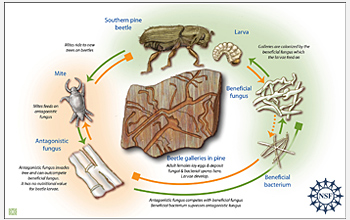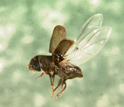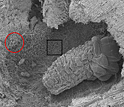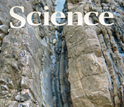News Release 08-171
Beetles Get by With a Little Help From Their Friends
Cooperation between insects and bacteria suggests inter-species collaboration may be common in many ecosystems

Beetles, two fungi, mites and a bacterium have a complex relationship of dependence and competition.
October 2, 2008
This material is available primarily for archival purposes. Telephone numbers or other contact information may be out of date; please see current contact information at media contacts.
Humans living in communities often rely on friends to help get what they need and, according to researchers in the lab of Cameron Currie at the University of Wisconsin-Madison, many microbes, plants and animals benefit from 'friendly' associations too.
The Currie team's study, which was funded by the National Science Foundation (NSF) and published in the Oct. 3, 2008, issue of the journal Science, describes the complex relationship between a beetle, two types of tree fungus and a bacterium that aids in their struggle to survive and thrive.
Research in the Currie lab revealed that adult beetles have a specialized compartment in their bodies used to store two other organisms: a slow-growing beneficial fungus that serves as a food source and a bacterium that produces a unique, newly discovered antibiotic. Interestingly, the antibiotic inhibits the growth of a fast-growing competitor fungus but does not affect the slow-growing beneficial fungus.
Before laying eggs in tree bark, adult female beetles spread the slow-growing, beneficial fungus and bacteria around the area where they will deposit the eggs. The antibiotic from the bacteria prevents growth of the fast-growing competitor fungus but does not harm the slow-growing beneficial fungus, which continues to grow and provide a rich source of nutrition for the developing beetle larvae.
"There are perhaps 10 million species of insects on the planet," says Currie, an evolutionary biologist. "So, if insects associate with bacteria like this more generally, then there's potentially a huge number of new places to explore."
NSF Program Officer Lita Proctor agrees, saying this research, which was co-authored by Jon Clardy of Harvard Medical School, has important implications for the ecosystems these species occupy.
"It may be that some organisms evolved symbioses (cooperative relationships) as a strategy to give them an advantage over others when competing for resources," said Proctor. "These cooperative relationships may be much more common than we thought."
In-depth study of these interactions could also lead to identification of new types of antibiotics or other chemicals which may have agricultural or medicinal uses. Thus in the future, we may get by with help from our little friends.
-NSF-
-
Adult southern pine beetle in flight.
Credit and Larger Version -
Southern pine beetle larva surrounded by bacteria (black square) and fungus (red circle).
Credit and Larger Version -
The researchers' findings are published in the Oct. 3, 2008, issue of Science magazine.
Credit and Larger Version
Media Contacts
Lisa Van Pay, NSF, (703) 292-8796, email: lvanpay@nsf.gov
Lily Whiteman, National Science Foundation, (703) 292-8310, email: lwhitema@nsf.gov
Madeline Fisher, University of Wisconsin-Madison, (608) 890-0465, email: mmfisher@wisc.edu
Principal Investigators
Cameron Currie, University of Wisconsin-Madison, (608) 890-0237, email: currie@bact.wisc.edu
The U.S. National Science Foundation propels the nation forward by advancing fundamental research in all fields of science and engineering. NSF supports research and people by providing facilities, instruments and funding to support their ingenuity and sustain the U.S. as a global leader in research and innovation. With a fiscal year 2023 budget of $9.5 billion, NSF funds reach all 50 states through grants to nearly 2,000 colleges, universities and institutions. Each year, NSF receives more than 40,000 competitive proposals and makes about 11,000 new awards. Those awards include support for cooperative research with industry, Arctic and Antarctic research and operations, and U.S. participation in international scientific efforts.
Connect with us online
NSF website: nsf.gov
NSF News: nsf.gov/news
For News Media: nsf.gov/news/newsroom
Statistics: nsf.gov/statistics/
Awards database: nsf.gov/awardsearch/
Follow us on social
Twitter: twitter.com/NSF
Facebook: facebook.com/US.NSF
Instagram: instagram.com/nsfgov





